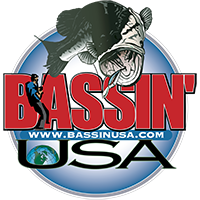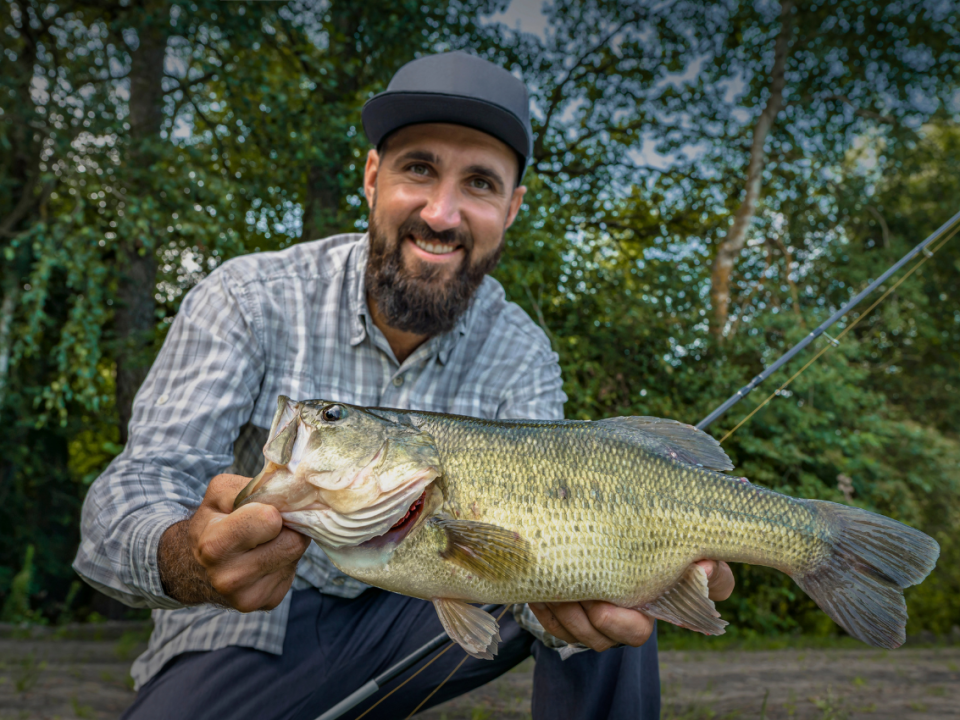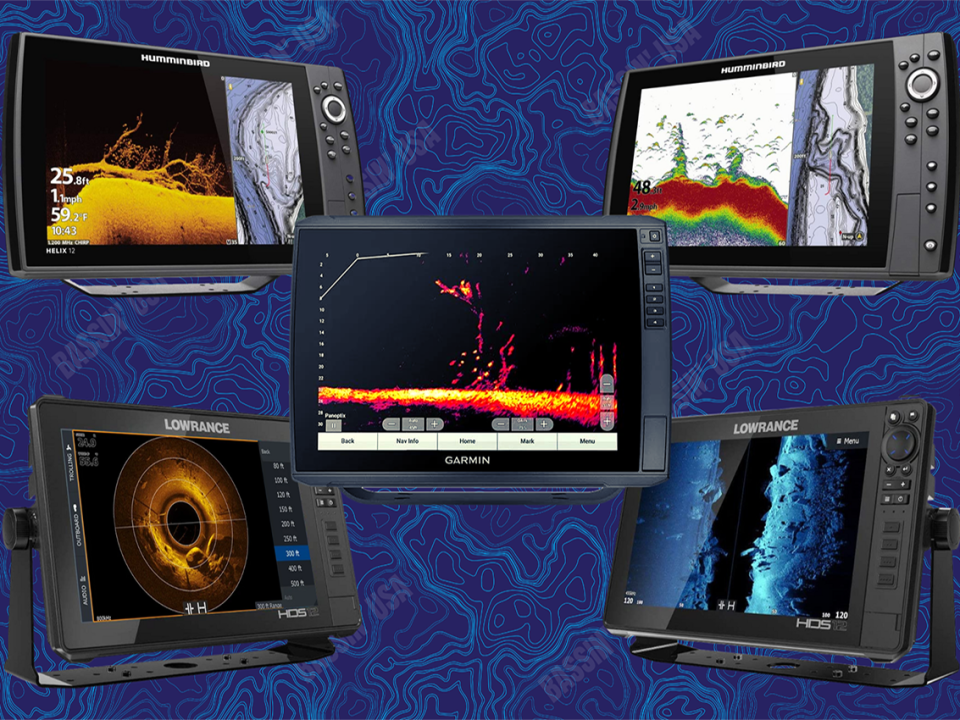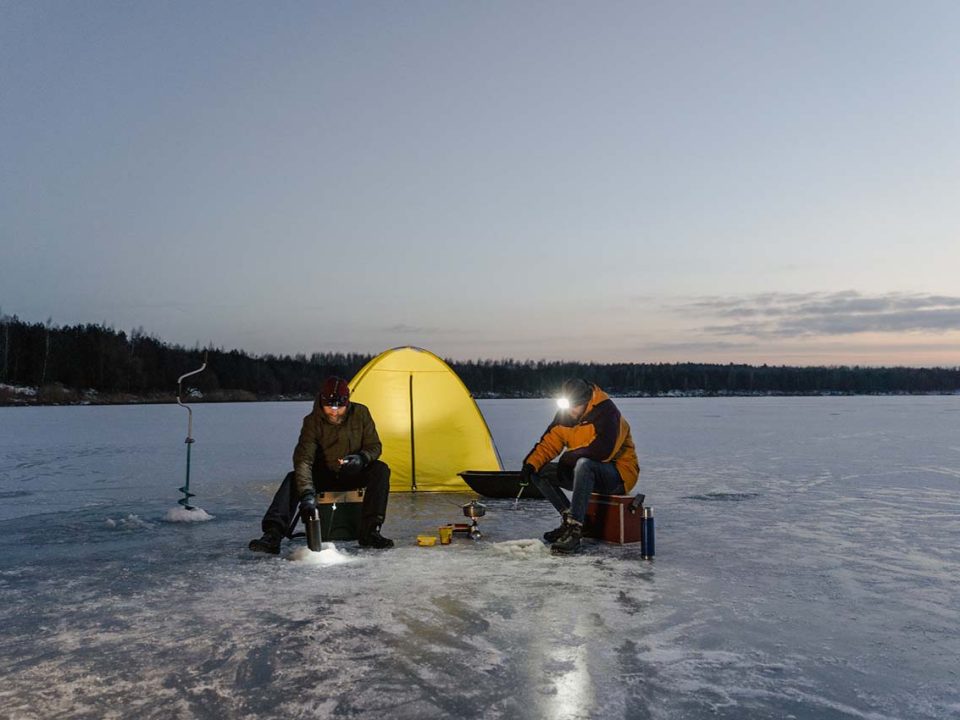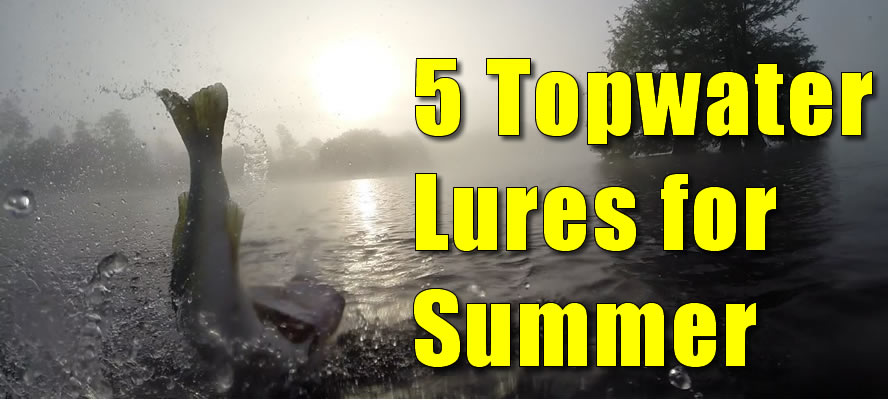
5 Topwater Baits for Summer
We’ve broken down some of the best Topwater lures into 5 groups that will help you choose the right lure for the right situation. In golf, it’s important to choose the right club for the shot and the same holds true for bass fishing. You need to choose the right lure for the situation.
1. Sammy & Spook
Situation: Open water, chasing baitfish.
Cigar shaped lures like a Zara Spook or Lucky Craft Sammy are designed to zig zag from side to side when worked properly. The technique is called “Walking the Dog” and it can be deadly on all species of black bass especially in open water when bass are chasing baitfish. These lures can be effective when fished over any depth of water. When walking the dog, you want the water’s surface to be slick or with a slight ripple. If it’s too choppy, it becomes more difficult to execute this technique. Check out our instructional video to learn How to Walk a Topwater Spook or Sammy
2. Frogs
Situation: Heavy vegetation, matted weeds and thick algae growth on water surface
Frogs can be broken down into two types, hollow body and solid body. If you’re fishing matted vegetation, “the cheese”, slimy weeds, hollow and solid body frogs are sometimes the best tool for the job. Why choose one over the other? Hollow body frogs float when you stop them, giving a bass the chance to hit a stationary target at the surface. They come in walking style or popping style. Solid body frogs sink when you stop them, which can come in handy when bass blow up but miss your frog. When I’m froggin’, I like to have one of each type rigged and I let the bass tell me which one they like better. For more on frog fishing tips, check out our video
3. Poppers & Chuggers
Situation: Open water, larger bait (Chuggers), Finesse around visible targets (Poppers).
Chuggers typically make more noise and tend to be larger than a popper. Chuggers are great for fishing open water in lakes and reservoirs that have larger bait fish like Blue Back Herring. Chuggers can call bass in from far distances in deep water where bass are used to seeing larger baitfish taken near the surface. Although they do come in smaller sizes, the big chuggers that look more like a saltwater lure tend to work best when targeting bass keying in on larger baitfish.
Poppers are more of a finesse lure and are typically on the smaller size (up to 4”, although you can buy larger sizes). These fish catching beauties work really well around visible targets, like docks, lily pad edges, inside and outside weed edges, etc. They also can produce very well in open water situations where bass are keying in on bait fish, but are not aggressively chasing. A popper twitched and then left alone to sit, makes an easy target for a bass. Check out our video for some easy tips to help you trick out your popper:
4. Prop Baits & Wake Baits
Situation: Submerged vegetation, sub-surface feeding, nighttime, clear water, larger forage
The devil horse, tiny torpedo and skitter prop are just a few prop baits that you may have heard of. These lures have a very unique sound when coming through the water that is really unlike any other topwater. You can work them fast or slow. They float and work very well with a twitch push type retrieve. The propellers throw water out to the sides of the lure which looks like tiny bait fish trying to escape from a small predator. Bass will take advantage of a situation that offers them an easy meal. A smaller fish feeding is focused on the task at hand and that makes it more vulnerable to being attacked by a larger predator.
Wake baits are floating lures that are designed to produce a wake when steadily retrieved and typically have a side to side wiggling action. There are generally two types of wake baits, “surface” and “subsurface”. Some of my personal favorites surface wake baits are the Jitter Bug and Whopper Plopper and for subsurface, I like a Red Fin, KVD 1.5 and Spro BBZ-1. There are tons of others and many diving lures can be made to “bulge” or “wake the surface” when retrieved, for example a Long-A Bomber or the original floating Rapala. These lures are a great go to option when bass are feeding just below the surface. Some are noisy at the surface (like the Jitter Bug and Whopper Plopper) and other are more subtle (like the Red Fin & Spro BBZ-1 Rat).
5. Buzzbaits
Situation: Fishing shallow, sparse vegetation.
It’s hard to beat a buzzbait fished over vegetation in the heat of the summer. They come in many sizes and colors, but there’s something special about a black buzzbait early in the morning that big bass can’t resist. Buzzbaits can be fished over any depth of water, but are generally used in shallower water. Cast them right up to the bank and work them back to the boat slow and steady. From shore, try casting parallel to the bank to keep the lure in strike zone for as long as possible. They are very easy to fish, chuck ‘em out and wind ‘em in for the most part.
TIPS:
– You want a buzzbait to move just fast enough to stay at the surface of the water.
– Much like a spinner bait, you can work a buzz bait around heavy cover like blow down trees, bushes, docks, etc.
– If a fish blows up on your buzzbait, just keep reeling slow and steady.
– Don’t set the hook until you feel the bass on the rod.
– Make your buzzbait squeak by crimping the clevis near the blade so that it doesn’t move. Then flatten and rough up the flat surface on the clevis that touches the blade. Finally you can hold it out the window on the way to the lake, or rig in front of a fan using a close pin.
